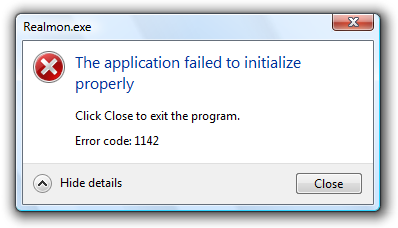Navigating social interactions can sometimes be tricky, especially when it comes to expressing our preferences. In this article, we delve into the art of answering the question “Do you mind?” and unravel the confusion surrounding the simple yet perplexing responses of “Yes” and “No.” Join us as we shed light on how to ask, reply, and ultimately avoid any misunderstandings.
Appropriate Responses to “Do You Mind”
When someone asks you “Do you mind? “, it’s important to respond appropriately to avoid confusion. If you don’t mind, a simple “No, I don’t mind” is a direct and clear response. On the other hand, if you do mind, it’s best to be honest and say “Yes, I do mind. ” Adding an explanation to your response can help the person understand your reasoning.
Expressing Consent Graciously
When someone asks if you mind something, it’s important to express your consent gracefully. Whether it’s a simple request or a more significant matter, your reply can avoid confusion and potential conflicts. Start by understanding the question and the reason behind it. If you don’t mind, reply with a polite “no” or “not at all,” emphasizing your agreement.
On the other hand, if you do mind, use a gentle tone and explain your reasoning. Avoid anger or disgust, as it can escalate the situation. Pay attention to your body language and facial expressions, ensuring they align with your response.
Politely Declining: “I’d Rather You Not”
Politely declining a request can be done tactfully and without causing offense. When someone asks if you mind doing something, it’s perfectly acceptable to reply with a simple “I’d rather you not. ” This phrase conveys your preference without resorting to anger or disgust. It’s important to remember that everyone has their own boundaries and it’s okay to say no. By using this polite phrase, you can avoid any confusion or misunderstanding.
So the next time you’re asked to do something you’d rather not, don’t be afraid to assert yourself with a firm but polite “I’d rather you not.
Affirming Without Hesitation: “Go On Ahead”

When someone asks if they can go ahead, it’s important to respond clearly and confidently. By affirming without hesitation, you can avoid any confusion and provide a straightforward answer. Instead of hesitating or being indecisive, reply with a simple “Go on ahead. ” This response shows that you are giving permission and encourages the person to proceed. It’s important to be attentive and polite when answering, as this can make the person feel respected and valued.
Agreeing to Accommodate: “Yes, I Can Do That”
When someone asks for an accommodation, responding with a simple “Yes, I can do that” can go a long way. By agreeing to accommodate, you show your willingness to help and create a positive atmosphere. This simple response eliminates any confusion and assures the person that their request is being taken seriously. Whether it’s adjusting your schedule, providing extra assistance, or making changes to your plans, being accommodating is a valuable trait. It shows that you are attentive to the needs of others and are willing to go the extra mile.
So, next time someone asks for an accommodation, respond with a confident “Yes, I can do that” and make a difference in someone’s day.
Giving Permission with Ease: “Not At All”

Giving permission with ease can sometimes be tricky, especially when the answer is a clear “Not at all.” When someone asks for permission and you want to reply with a simple and direct “No,” it’s important to be mindful of their feelings. Instead of just saying “No,” try using a polite phrase like “Not at all” to soften the response. This shows that you are considerate and respectful of their request.
Encouraging Action: “Please Feel Free”
When asking someone for a favor or permission, it’s important to use clear and direct language. Instead of beating around the bush, try using the phrase “please feel free. ” These three words convey a sense of openness and invitation, making it easier for the person to respond. For example, instead of saying “Do you mind if I borrow your pen? “, you can say “Please feel free to lend me your pen. ” This eliminates any confusion and gives the other person a clear indication of what you’re asking for.
By using this phrase, you can encourage action and make the conversation more efficient. So, next time you need something, remember to say “please feel free” and get the response you need.
When You Prefer Not To: “Yes, I Do Mind”

When someone asks if you mind doing something, it’s important to respond honestly. If you prefer not to do it, simply say “Yes, I do mind.” This clear and direct response avoids any confusion or misunderstandings. It’s okay to set boundaries and prioritize your own needs.
Reluctant Acceptance: “I Will Do It Anyway”
Reluctant acceptance is a common response when asked to do something we don’t really want to do.
Drawing Boundaries Politely: “I’m Sorry, I Can’t”
When it comes to drawing boundaries politely, sometimes a simple “I’m sorry, I can’t” is all you need to say. This straightforward response can help you assert yourself without causing offense. By using polite language and a calm tone, you can communicate your limitations or boundaries in a respectful manner. It’s important to remember that you don’t owe anyone an explanation for saying no. If someone asks for a favor or a request that you cannot fulfill, it’s perfectly acceptable to politely decline.
Handling Requests During Conflict
Handling requests during conflict can be a delicate task. It’s important to be clear and concise in your response. Listen attentively to the request, considering the reason behind it. Responding with a simple “yes” or “no” can help avoid confusion, but also consider using an adjective to further clarify your answer.
If you find yourself unsure of the request, don’t hesitate to ask for pardon or further clarification.
Offering Apologies Tactfully: “Pardon Me”
When it comes to offering apologies, it’s important to do so tactfully. One way to express remorse is by saying “Pardon me. ” This phrase acknowledges a mistake or an interruption while also showing respect for the other person. By using this polite expression, you can navigate potentially awkward situations with grace and empathy. Whether you accidentally bumped into someone or interrupted a conversation, saying “Pardon me” shows that you recognize your error and are genuinely sorry.
This small act of politeness can go a long way in maintaining positive relationships and avoiding unnecessary conflicts.
Inquiring About Concerns: “Is Anything the Matter?”
Inquiring about concerns is essential for effective communication. When asking “Is anything the matter? ” it is important to be attentive and show genuine concern. By using simple and direct language, you can avoid any confusion and allow the person to feel comfortable sharing their concerns.
Pay attention to their body language and tone of voice as well, as these can provide additional clues about their emotions.
Acknowledging Oversight: “I Didn’t Mean To”

Acknowledging oversight is important when it comes to unintentionally causing confusion or misunderstanding. Sometimes, we may say things without realizing the impact they can have on others. It’s crucial to take responsibility for our words and actions and not dismiss them with a simple “I didn’t mean to. ” By acknowledging our oversight, we show empathy and understanding towards the person affected.
It allows us to address the situation and find a resolution that respects everyone involved. Whether it’s a misunderstanding in a personal relationship or a miscommunication in a professional setting, owning up to our oversight is essential for maintaining healthy and respectful interactions.
Declining Requests with Courtesy: “I Am Sorry I Can’t”
Declining requests with courtesy is an essential skill that can prevent misunderstandings and maintain positive relationships. When you have to say “I am sorry I can’t,” it’s important to be sincere and empathetic in your response. Start by expressing gratitude for being asked and acknowledge the other person’s needs or desires. Offer a brief explanation for why you are unable to fulfill the request, but avoid going into unnecessary detail. Use polite and respectful language throughout your response, and if possible, suggest an alternative solution or offer assistance in another way.
Providing Clear Refusal: “I Mind Very Much”

When someone asks you if you mind doing something, it’s important to respond clearly to avoid any confusion. Instead of beating around the bush, a simple “Yes” or “No” will do the job. If you do mind, you can politely express your refusal by saying, “Yes, I do mind.” The key is to be direct and honest, without any fluff or unnecessary explanations.
Conveying Indifference Affably: “It’s No Problem”
When someone asks if you mind doing something, it’s often polite to respond with an affable indifference. One way to convey this is by saying “It’s no problem.” This simple phrase communicates that you are willing to help or accommodate without any inconvenience or trouble. By using a polite and friendly tone, you can ensure that the other person understands your lack of concern.
Expressing Enthusiastic Consent: “Yes, Of Course!”

Expressing enthusiastic consent is crucial in any interaction, especially when it comes to matters of personal boundaries and consent. A clear and direct way to express enthusiastic consent is by saying, “Yes, of course! ” This affirmative response leaves no room for confusion or misinterpretation. When someone asks for your consent, it’s important to respond with enthusiasm and clarity to ensure both parties are on the same page. By using these words, you are actively expressing your willingness and excitement.
Navigating Confusing Queries Correctly
When faced with confusing queries like “Do you mind? ” it’s important to respond correctly. To navigate these types of questions, clarity is key. Understanding the intent behind the question is crucial in providing an appropriate response. It’s important to listen carefully and assess the situation before answering.
If someone asks if you mind, consider adjectives like “kind,” “helpful,” or “thoughtful” to gauge their expectations.
Conclusion: Navigating the Nuances of Consent
Navigating the nuances of consent can be a complex task. It is crucial to approach the topic with clarity and respect. When asking for consent, it is important to be direct and avoid any confusion. Clearly state your intentions and give the other person the opportunity to respond with a simple “yes” or “no.”

